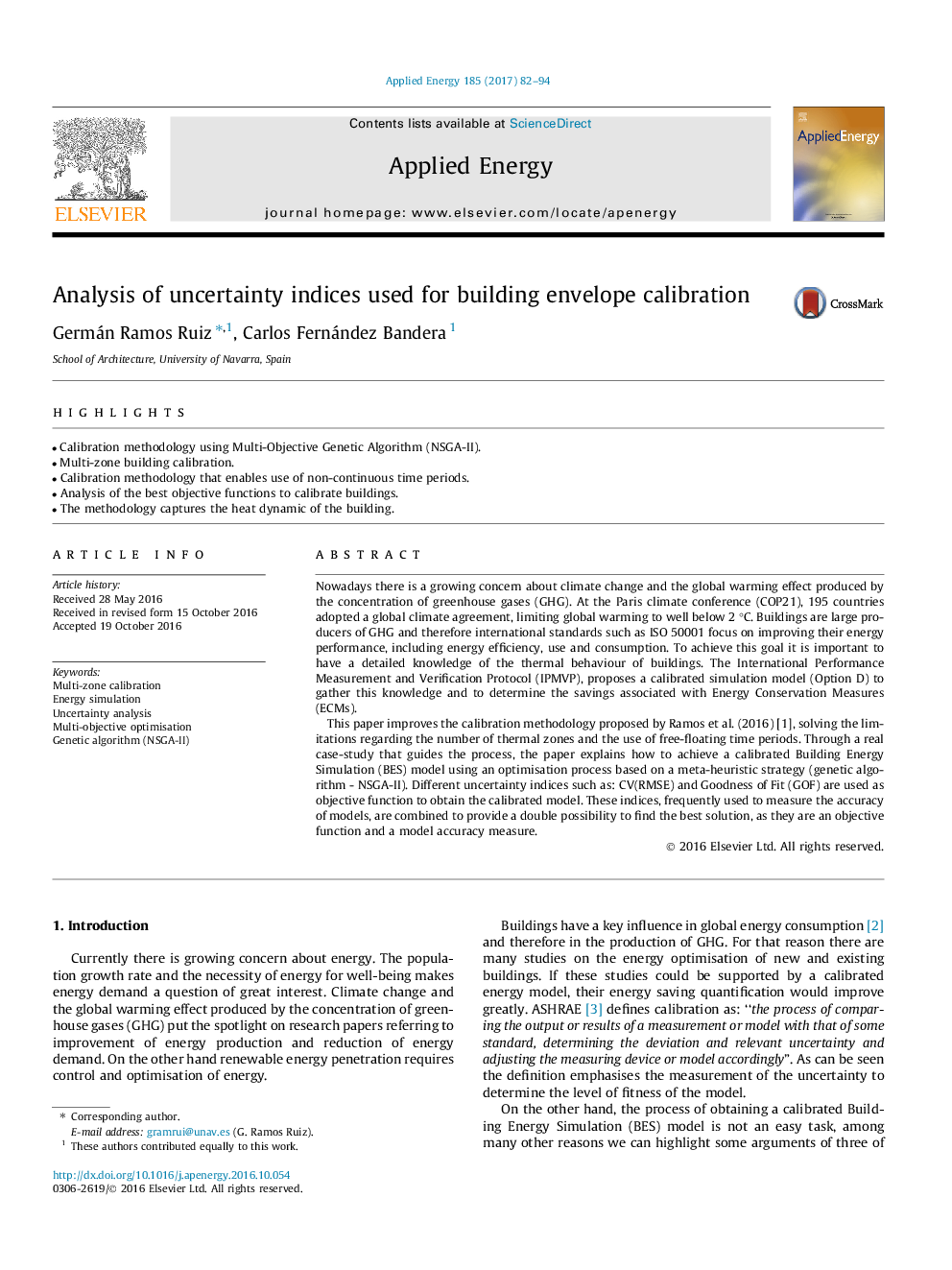| Article ID | Journal | Published Year | Pages | File Type |
|---|---|---|---|---|
| 4916957 | Applied Energy | 2017 | 13 Pages |
Abstract
This paper improves the calibration methodology proposed by Ramos et al. (2016) [1], solving the limitations regarding the number of thermal zones and the use of free-floating time periods. Through a real case-study that guides the process, the paper explains how to achieve a calibrated Building Energy Simulation (BES) model using an optimisation process based on a meta-heuristic strategy (genetic algorithm - NSGA-II). Different uncertainty indices such as: CV(RMSE) and Goodness of Fit (GOF) are used as objective function to obtain the calibrated model. These indices, frequently used to measure the accuracy of models, are combined to provide a double possibility to find the best solution, as they are an objective function and a model accuracy measure.
Related Topics
Physical Sciences and Engineering
Energy
Energy Engineering and Power Technology
Authors
Germán Ramos Ruiz, Carlos Fernández Bandera,
